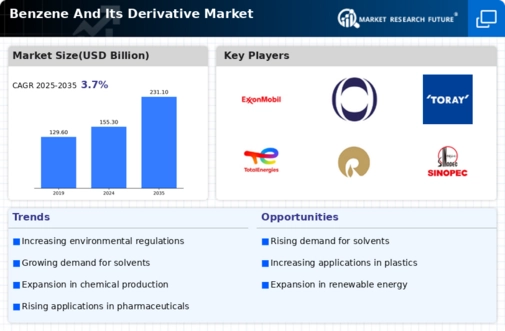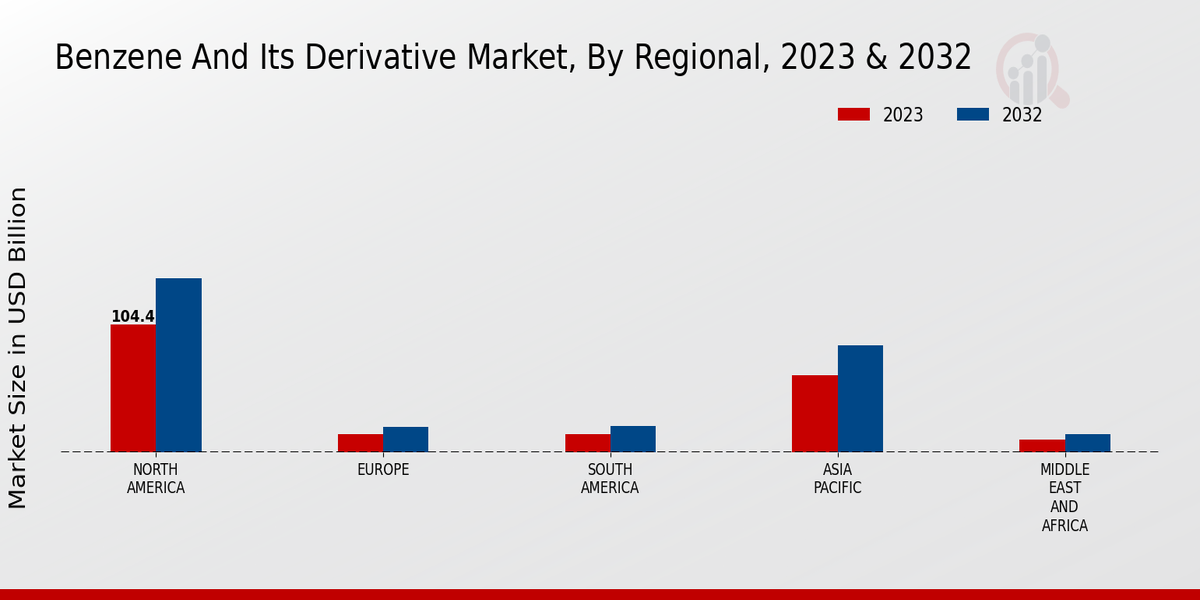Growth in End-Use Industries
The expansion of end-use industries such as automotive, electronics, and packaging significantly influences the Benzene And Its Derivative Market. For instance, the automotive sector's shift towards lightweight materials has led to increased utilization of benzene derivatives in producing high-performance plastics. In 2023, the automotive industry alone represented a substantial portion of the benzene derivatives market, with an estimated value of over 20 billion USD. Additionally, the electronics sector's demand for advanced materials, including those derived from benzene, is projected to grow, potentially increasing the market size further. This growth in end-use industries underscores the essential role of benzene derivatives in modern manufacturing.
Rising Demand for Petrochemicals
The increasing demand for petrochemicals is a primary driver of the Benzene And Its Derivative Market. As industries such as automotive, construction, and consumer goods expand, the need for benzene derivatives like styrene and phenol rises. In 2023, the petrochemical sector accounted for approximately 15% of the total chemical market, indicating a robust growth trajectory. This trend is expected to continue, with projections suggesting a compound annual growth rate (CAGR) of around 5% through 2028. The versatility of benzene derivatives in producing plastics, resins, and synthetic fibers further fuels this demand, making it a critical component in various manufacturing processes.
Innovations in Chemical Processing
Innovations in chemical processing technologies are reshaping the Benzene And Its Derivative Market. Advanced catalytic processes and greener synthesis methods are being developed to enhance the efficiency of benzene production. For example, the introduction of more efficient catalytic reforming techniques has the potential to increase yield while reducing energy consumption. In 2023, the market for benzene derivatives was valued at approximately 60 billion USD, with a significant portion attributed to these technological advancements. As these innovations continue to evolve, they are likely to drive down production costs and improve the sustainability of benzene derivatives, making them more attractive to manufacturers.
Emerging Markets and Economic Development
Emerging markets are playing a pivotal role in the growth of the Benzene And Its Derivative Market. Countries experiencing rapid industrialization and urbanization are witnessing increased demand for benzene derivatives in various applications. For instance, in regions where infrastructure development is accelerating, the need for construction materials derived from benzene is surging. In 2023, emerging markets contributed significantly to the overall market growth, with estimates suggesting a CAGR of 6% in these regions through 2028. This trend indicates that as economies develop, the consumption of benzene derivatives will likely rise, further solidifying their importance in the global chemical landscape.
Regulatory Compliance and Environmental Standards
The Benzene And Its Derivative Market is increasingly influenced by regulatory compliance and environmental standards. Stricter regulations regarding emissions and chemical safety are prompting manufacturers to adopt cleaner production methods. In 2023, regulatory bodies implemented new guidelines that require lower benzene emissions, impacting production processes across the industry. This shift not only affects operational costs but also encourages investment in sustainable practices. As companies strive to meet these regulations, the demand for environmentally friendly benzene derivatives is likely to rise, creating new opportunities within the market. Compliance with these standards is becoming a competitive advantage for industry players.


















Leave a Comment